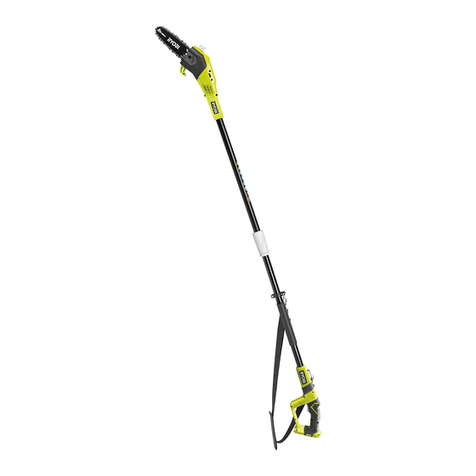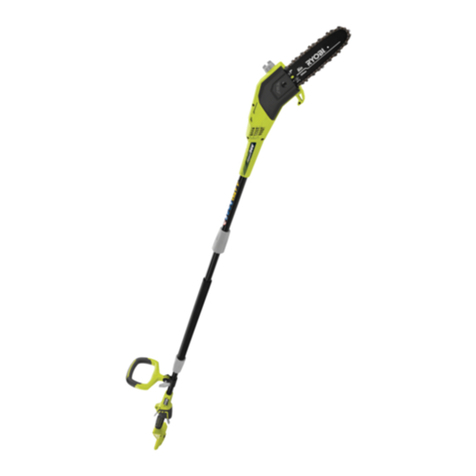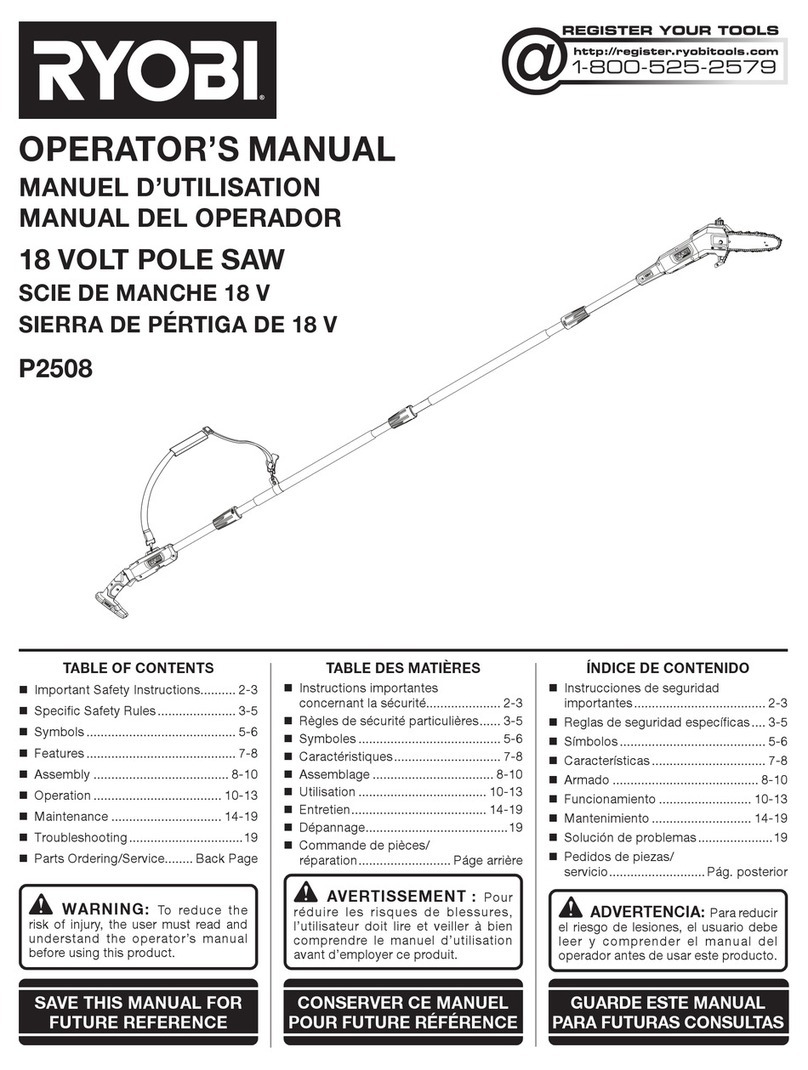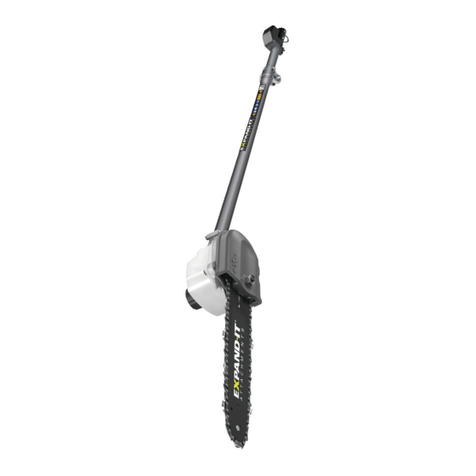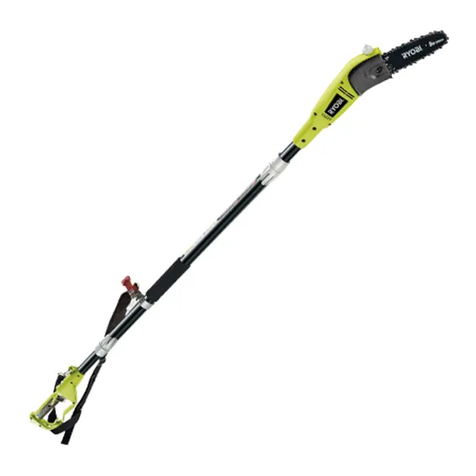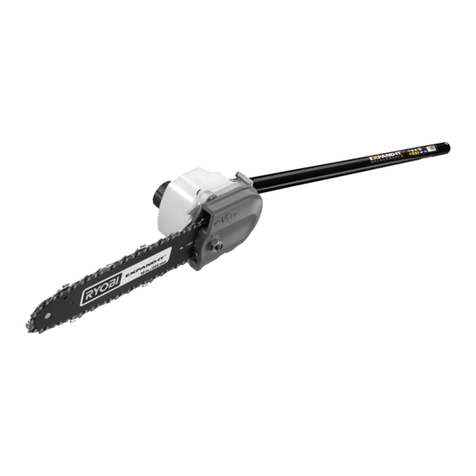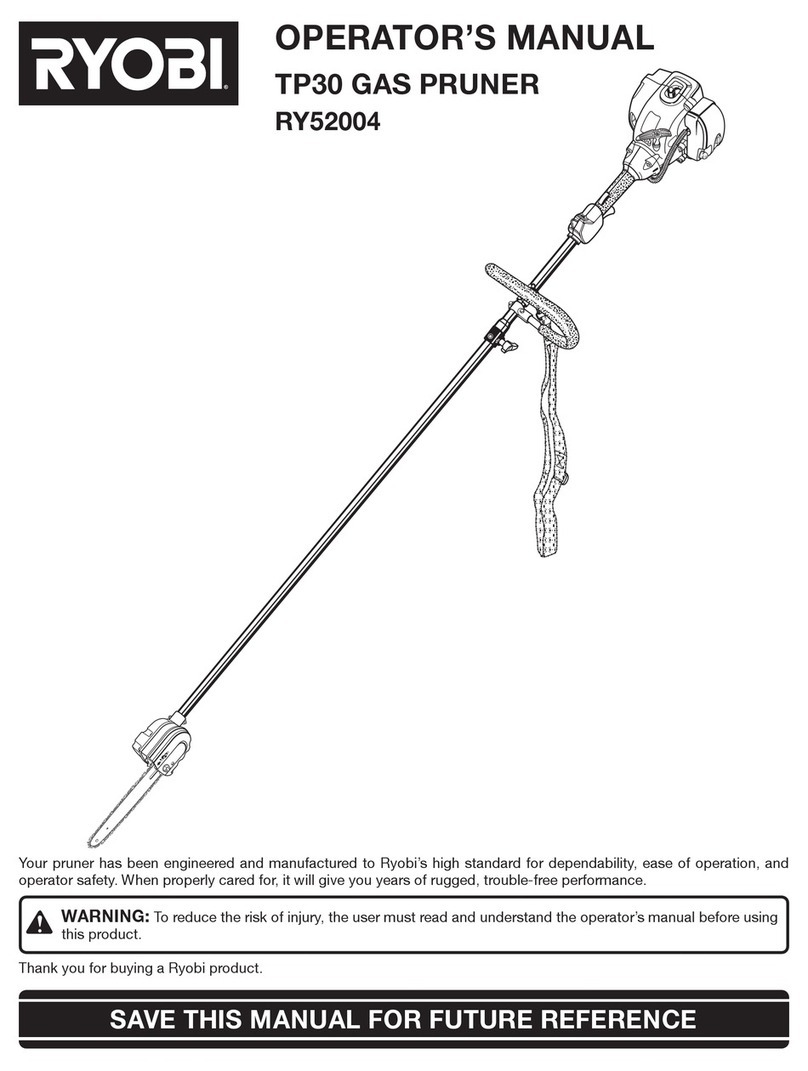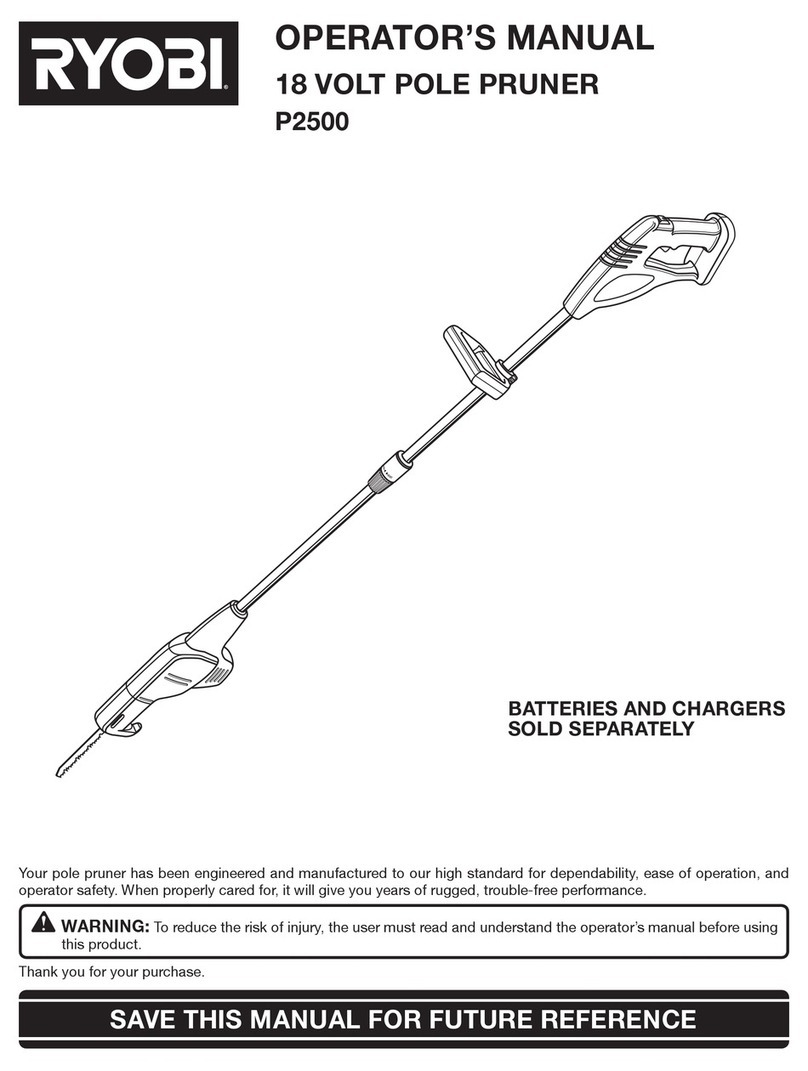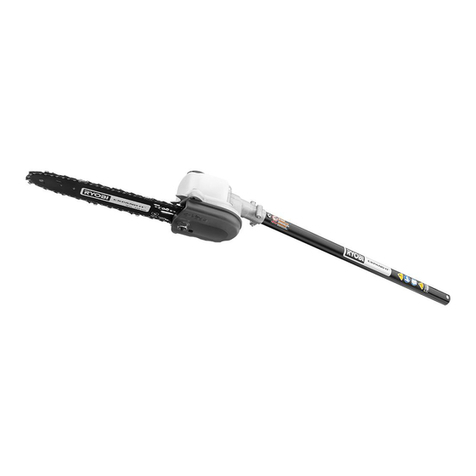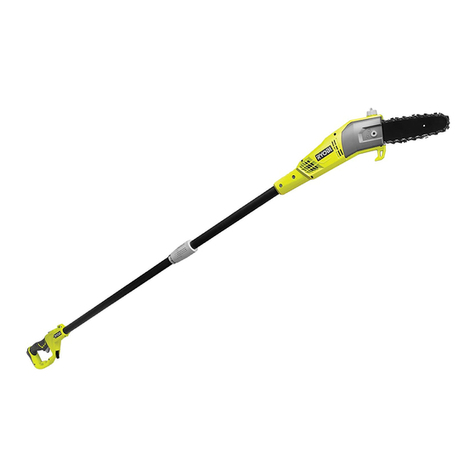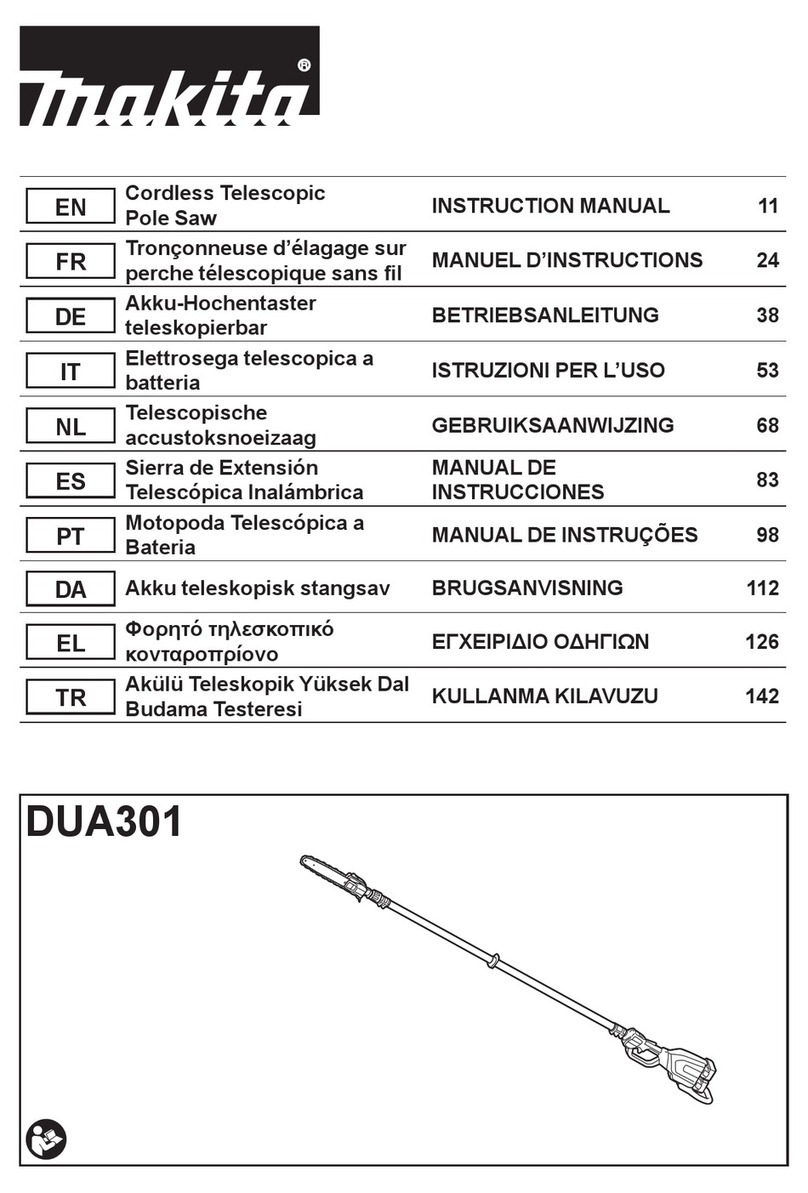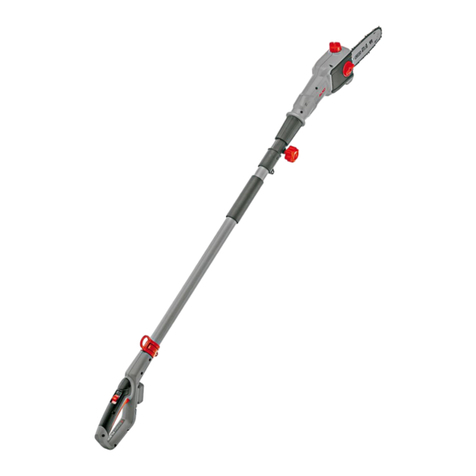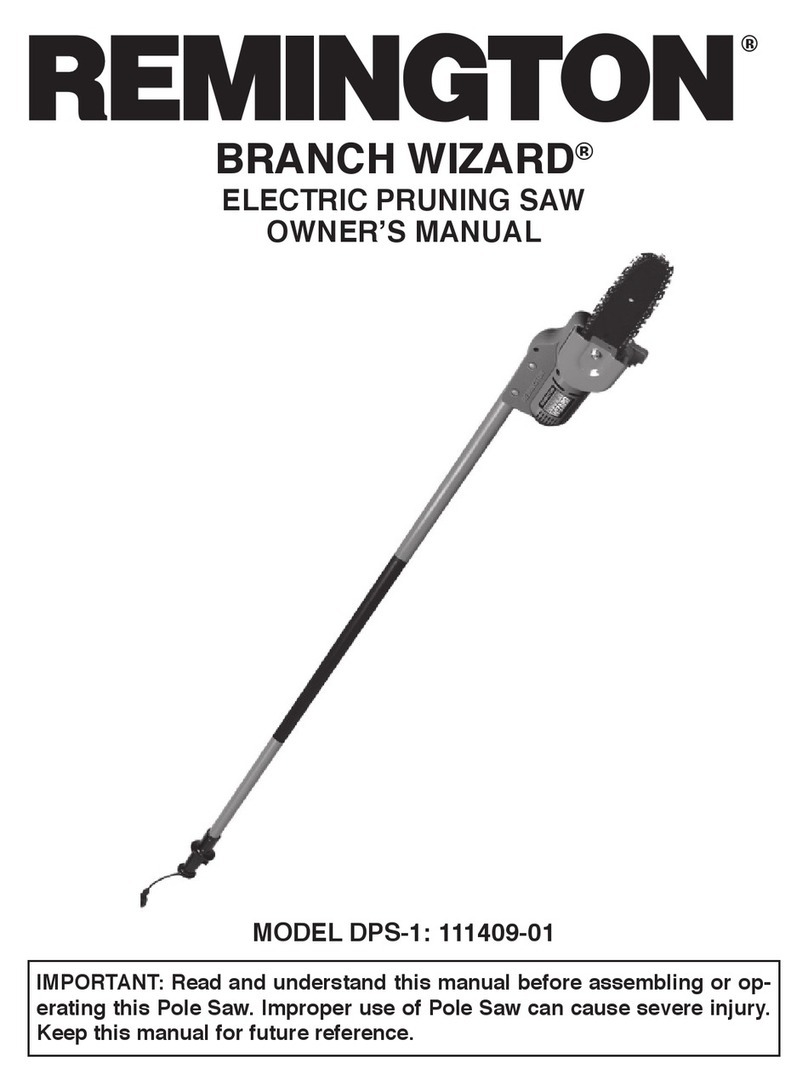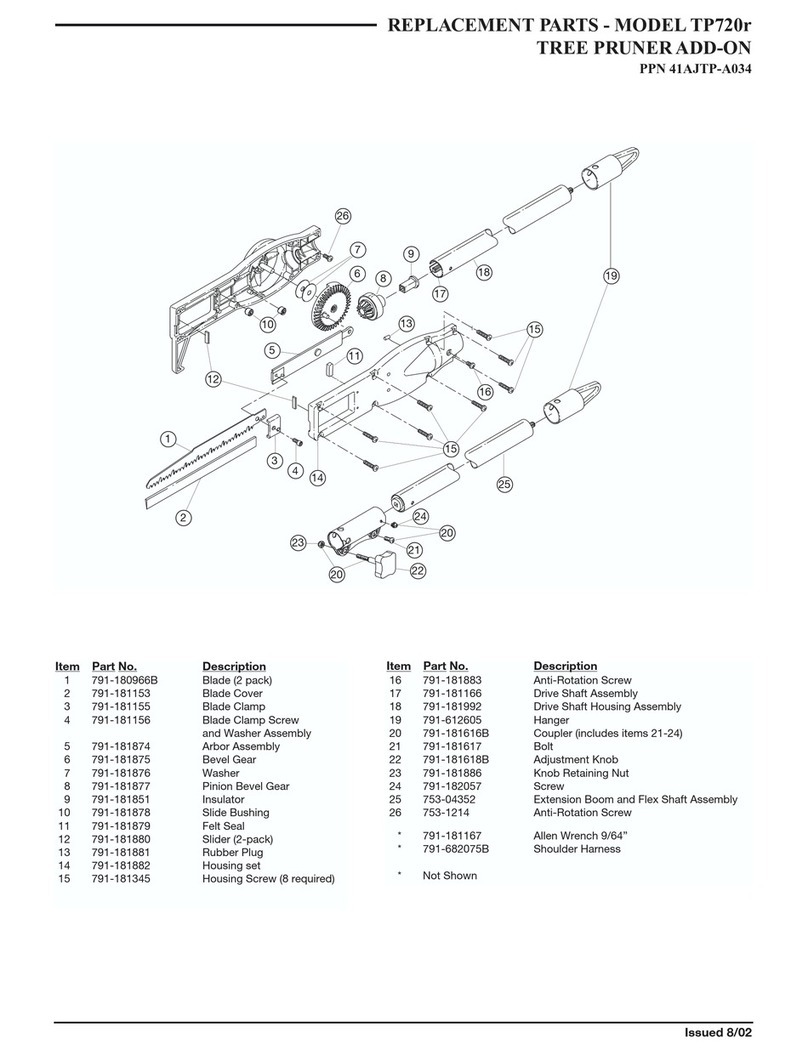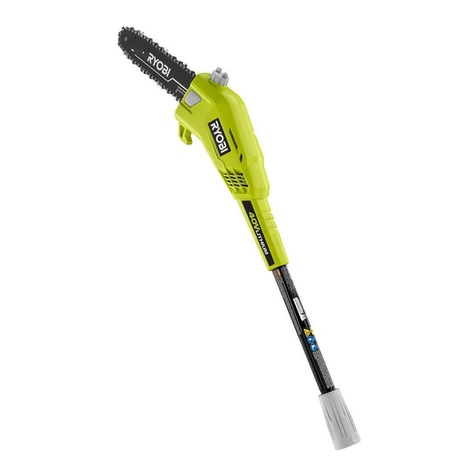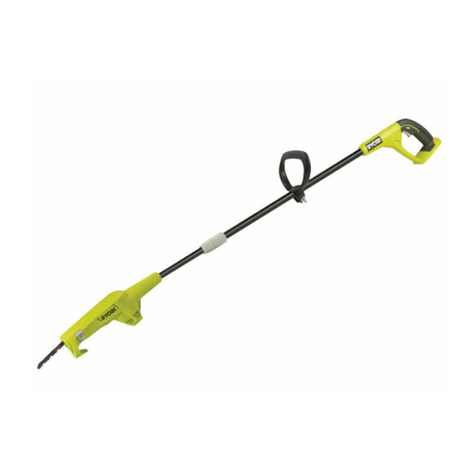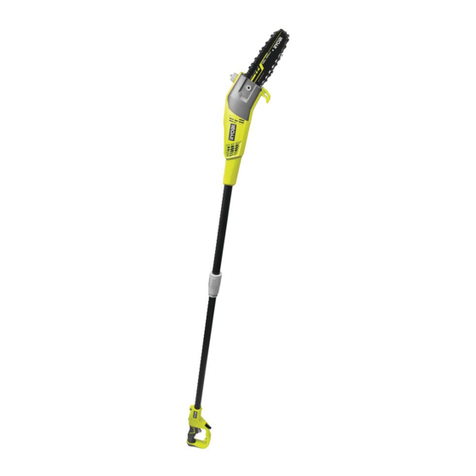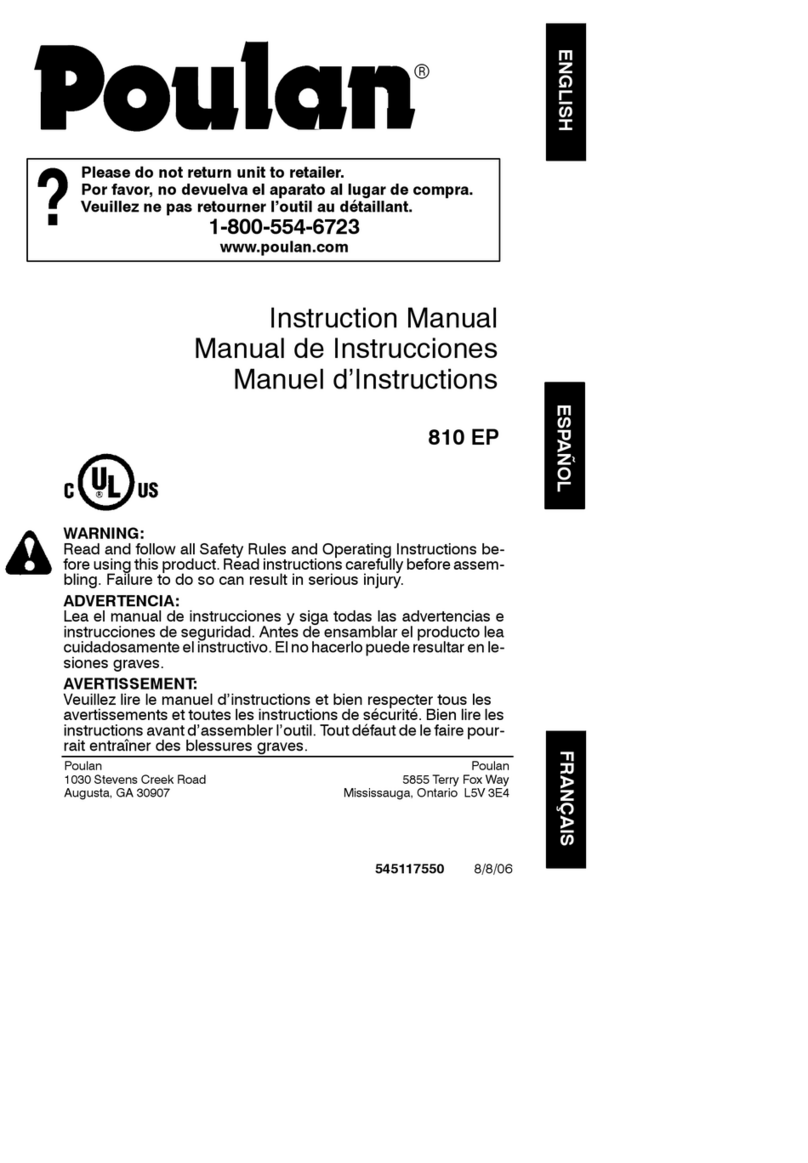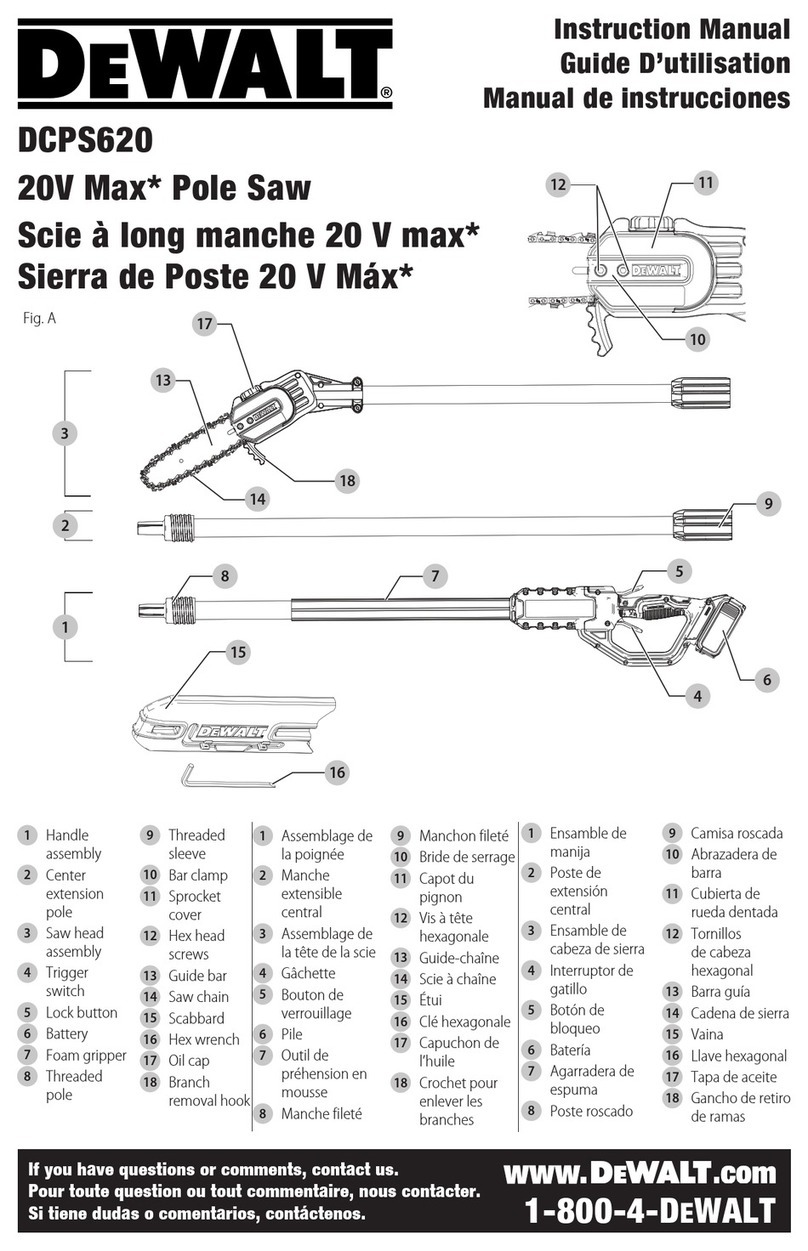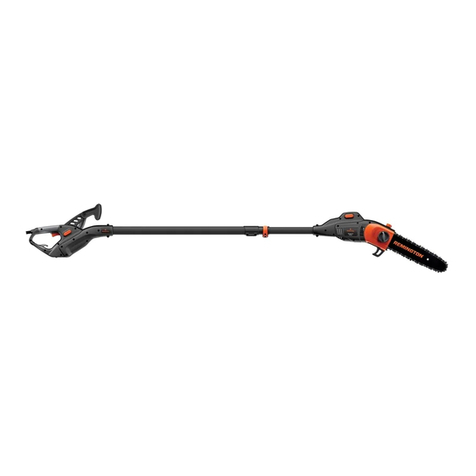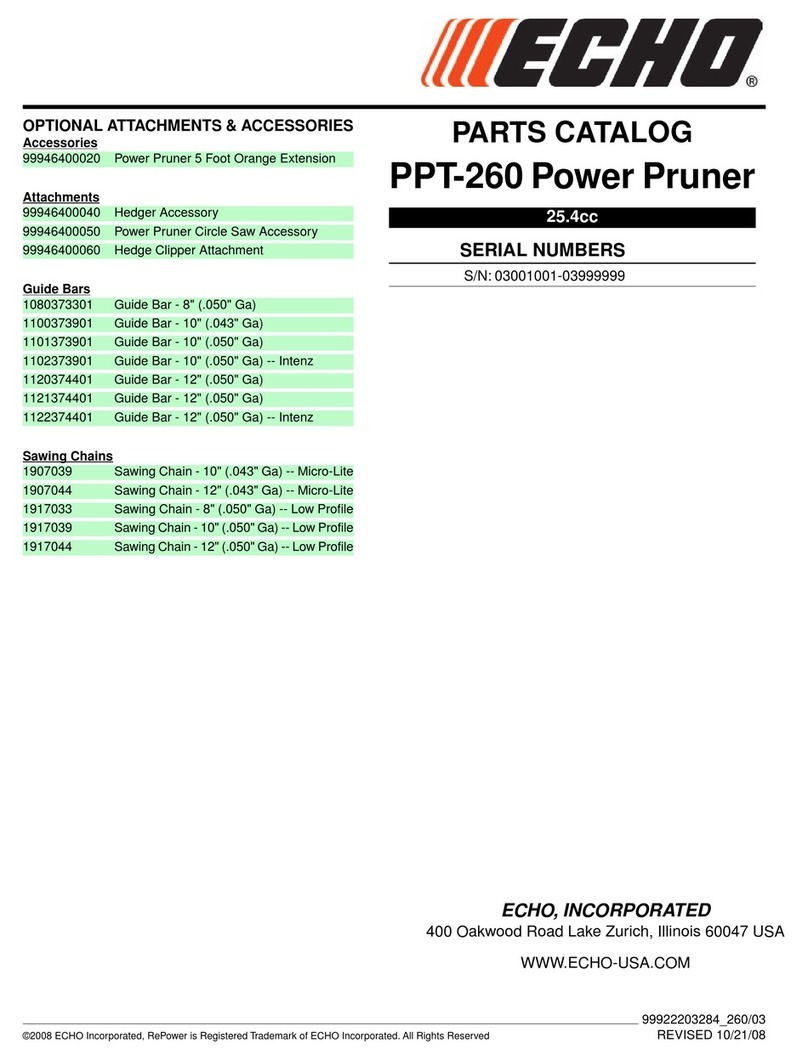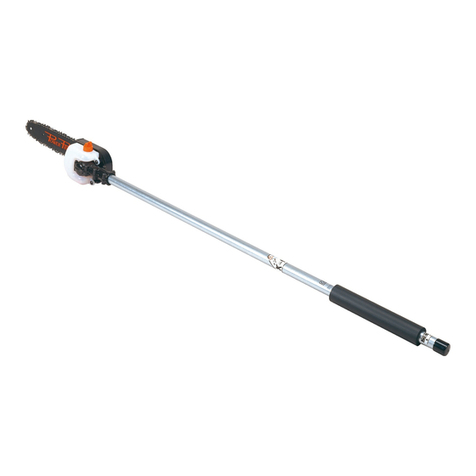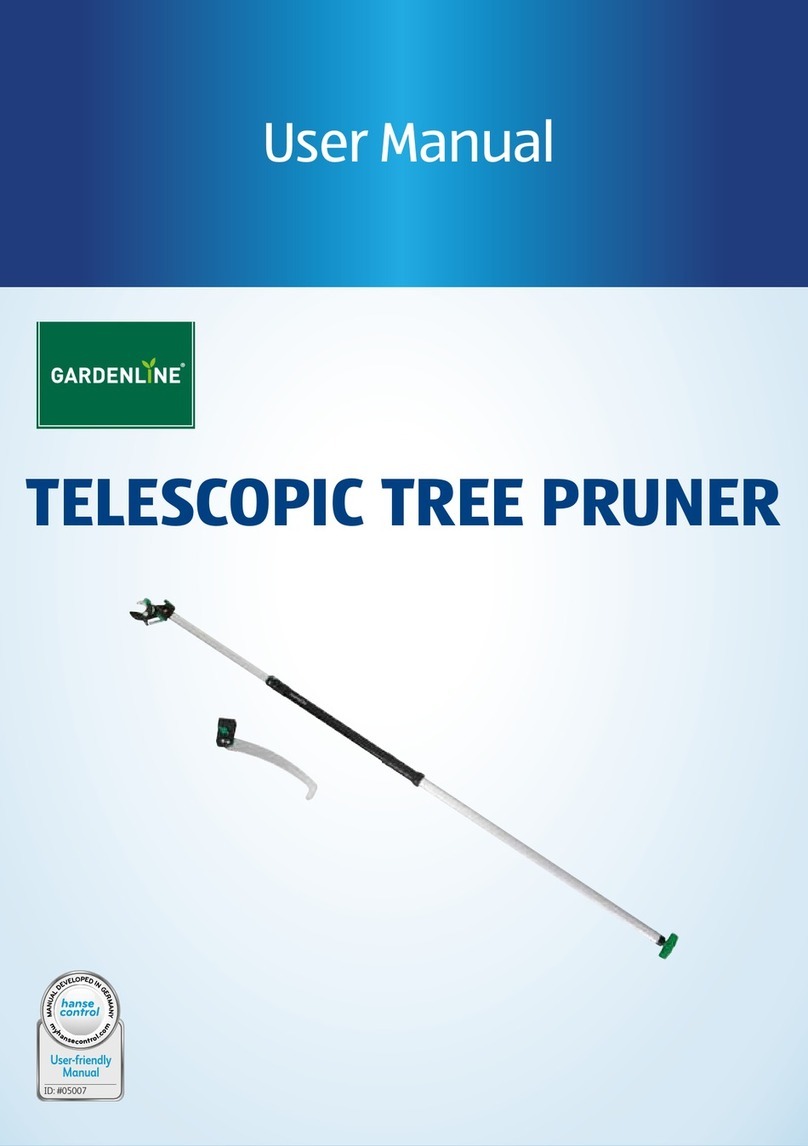
2
less likely to bind and are easier to control.
ŶUse the power tool, accessories and tool bits etc,
in accordance with these instructions, taking into
account the working conditions and the work to
be performed. Use of the power tool for operations
different from those intended could result in a
hazardous situation.
SERVICE
ŶHave your power tool serviced by a qualified repair
person using only identical replacement parts.
This will ensure that the safety of the power tool is
maintained.
ADDITIONAL GENERAL SAFETY WARNINGS
ŶSome regions have regulations that restrict the use of
the product. Check with your local authority for advice.
ŶNever allow children or people unfamiliar with the
instructions to use the product. Local regulations may
restrict the age of the operator.
ŶEnsure before each use that all controls and safety
devices function correctly. Do not use the product if the
“off” switch does not stop the motor.
ŶWear full eye and hearing protection, strong sturdy
gloves as well as head protection while operating the
product; use a face mask if operation is dusty.
ŶDo not wear loose fitting clothing, short trousers or
MHZHOOHU\RIDQ\NLQG
ŶSecure long hair so it is above shoulder level to prevent
entanglement in moving parts.
Ŷ%HZDUH RI WKURZQ IO\LQJ RU IDOOLQJ REMHFWV NHHS DOO
bystanders, children, and animals at least 15 m away
from work area.
ŶDo not operate in poor lighting. The operator requires a
clear view of the work area to identify potential hazards.
ŶUse of hearing protection reduces the ability to hear
warnings (shouts or alarms). The operator must pay
extra attention to what is going on in the working area.
ŶOperating similar tools nearby increases both the risk
RIKHDULQJLQMXU\DQGWKHSRWHQWLDOIRURWKHUSHUVRQVWR
enter your working area.
ŶKeep firm footing and balance. Do not overreach.
Overreaching can result in loss of balance and can
increase the risk of kickback.
ŶKeep all parts of your body away from any moving part.
ŶInspect the machine before each use. Check for correct
operation of all controls. Check for loose fasteners,
make sure all guards, and handles are properly and
securely attached. Replace any damaged parts before
use.
ŶDo not modify the machine in any way or use parts
and accessories which are not recommended by the
manufacturer.
ŶDo not let familiarity gained from frequent use of
machines allow you to become complacent and ignore
tool safety principles. A careless action can cause
VHYHUHLQMXU\ZLWKLQDIUDFWLRQRIDVHFRQG
ŶKeep handles and grasping surfaces dry, clean and
free from oil and grease. Slippery handles and grasping
surfaces do not allow for safe handling and control of
the tool in unexpected situations.
ŶOnly use a weather proof extension cord. Check the
extension cord before every use for damage. Always
uncoil the extension cord during use because coiled
cords can overheat. Damaged extension cords should
not be repaired, they should be replaced with an
equivalent type.
WARNING
If the machine is dropped, suffers heavy impact or begins
to vibrate abnormally, immediately stop the machine and
inspect for damage or identify the cause of the vibration.
Any damage should be properly repaired or replaced by
an authorised service centre.
PRUNER SAFETY WARNINGS
ŶNever use the pruner when there is a possibility of
thunderstorm or lightning. Store the pruner and the
power cables safely indoors.
ŶEnsure all guards, handles are properly fitted and are
in good condition.
ŶDo not start using the product until you have a clear
work area, secure footing, and a planned retreat path
away from the falling branches or limbs.
ŶBeware of the emission of lubricant mist and saw dust.
Wear mask or respirator if required.
ŶElectrical power should be supplied via a residual
current device (RCD) with a tripping current of not more
than 30 mA.
ŶIf the power cable becomes damaged, you must return
the machine to an authorised service centre for repair
or replacement.
ŶAlways hold the pruner with both hands when operating
it. Use one hand to firmly grasp the front hand grip. Use
the other hand to grasp the rear handle and operate the
WULJJHUUHOHDVHDQGRQRIIWULJJHU
ŶHold the power tool by insulated gripping surfaces only,
because the saw chain may contact hidden wiring.
Saw chains contacting a “live” wire may make exposed
metal parts of the power tool “live” and could give the
operator an electric shock.
ŶDo not modify your tool in any way or use it to power
any attachments or devices not recommended by the
manufacturer for your pruner.
ŶYour pruner comes with a harness. You must use it
whilst operating the pruner. It will assist you to control
the drop of the pruner after the cut is completed. It will
also help support the weight of the machine during use
and whilst moving between pruning positions.
ŶIdentify the quick release mechanism and practice
using it before you start using the machine. Its
FRUUHFW XVH PD\ SUHYHQW VHULRXV LQMXU\ LQ WKH FDVH RI
an emergency. Never wear additional clothing over
the harness or otherwise restrict access to the quick
release mechanism.
ŶBefore starting the tool, make sure the saw chain is not
FRQWDFWLQJDQ\REMHFW
Ŷ$QLQFRUUHFWO\WHQVLRQHGFKDLQFDQMXPSRIIWKHJXLGH


